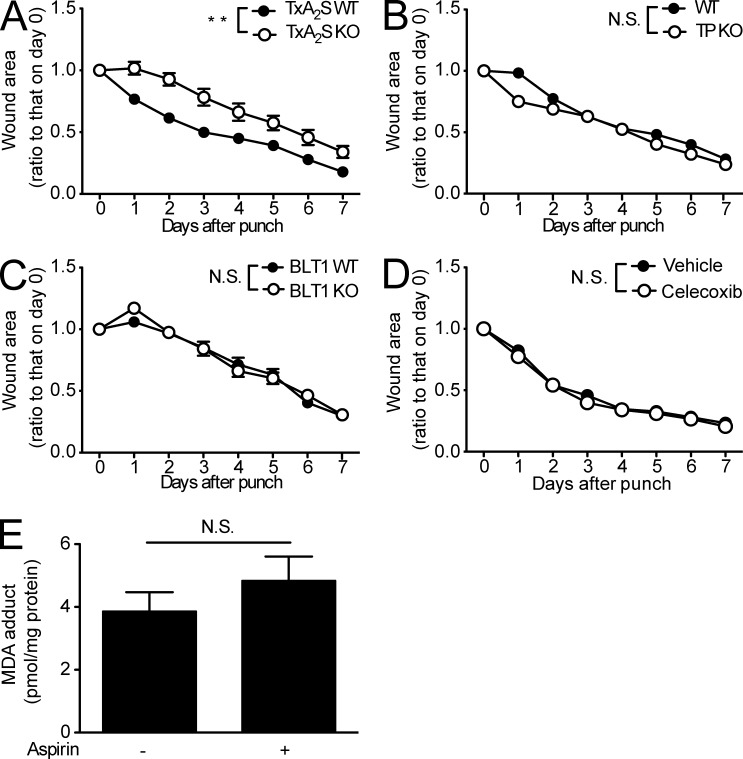Figure 4.
The TxA2/TP axis and BLT1 are not involved in wound healing. (A–D) Wound closure rate in TxA2S WT and TxA2S KO mice (A, n = 5–6 mice per group), WT and TP KO mice (B, n = 5 mice per group), BLT1 WT and BLT1 KO mice (C, n = 5 mice per group), and vehicle and celecoxib-treated WT mice (D, n = 6–7 mice per group). In D, vehicle (0.5% methyl cellulose) or celecoxib (25 mg/kg body weight) was administrated by gavage to the mice (male C57BL/6J, 8 wk old) every day. Celecoxib treatment started 48 h before skin punching. (E) MDA adduct levels were measured in mouse skin samples from WT mice with or without aspirin treatment (n = 4 mice per group). Aspirin treatment (0.18 mg/ml in the drinking water) was initiated at 2 d before the biopsy. A 5-mm punch biopsy sample was used to assess the presence of MDA adducts via ELISA. Data represent the mean ± SEM. **, P < 0.01; N.S., not significant (A–D, two-way ANOVA; E, unpaired Student’s t test). All the results are representative of at least two independent experiments.

